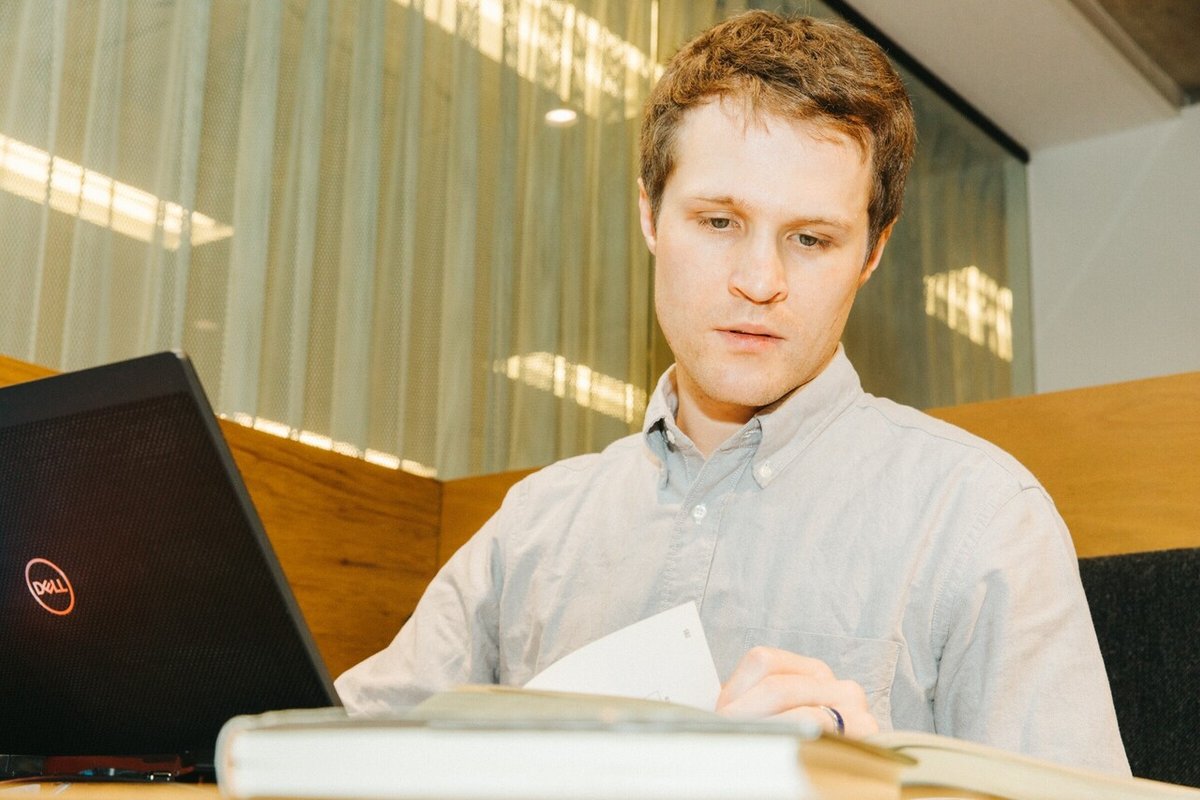
What is the secret to internal localization? We asked Aleksey, the Japanese-English bridge of WOVN’s multinational teams, about being a "jack-of-all-trades"
WOVN is made up of multinational teams from 25 countries.
We asked Aleksey, who acts as a bridge between Japanese and English speakers, about the finer points of internal localization work.
Aleksey Vasil Bolyshkanov (ボリシカノブ アレクシ バシル)
Solutions Division/Service Department/CS - Localization Section
April 2020: joined WOVN
Translation and interpretation. What does the job of internal localization entail?
- Thank you for sitting down with us today, Aleksey! Let's get right to it. What exactly does “internal localization” entail?
Aleksey:
I do two main things: document translation and interpretation.
Translation includes internal newsletters, president's blogs, company meeting presentation materials, customer emails, business negotiation materials, and support pages.
I myself sometimes translate the materials and more recently, I often check what has been translated.
As for interpretation, I interpret during company meetings, company socializing events, and regular meetings like sprint reviews where both the business side (mostly Japanese) and the product side (mostly foreigners) participate.
From time to time, I may accompany sales and Customer Success (CS) members to explain functions to the clients in English.
- Since company policies are discussed at the twice-monthly company meetings, that can be a big responsibility, right?
Aleksey:
Regarding company meetings, to ensure smooth interpretation on the day of, I participate in the operation team meetings during the agenda planning stage.
This allows me to directly hear the thoughts of the main speaker, Hayashi-san, and I also translate the presentation materials beforehand. For spontaneous discussions, I just play it by ear. (laughs)

Internal localization requires a "jack-of-all-trades" mentality
- You're getting a wide range of experience under your belt. Are there any tricks to internal localization?
Aleksey:
Whether internal or external, the most important thing to focus on when localizing is preparation.
We never know what fields external translations touch upon, so research is essential.
It's also fun to expand my knowledge in the fields that are completely foreign to me.
For internal localization within WOVN, I have business and tech jargon set to rapid fire. (laughs)
Even though I don’t necessarily need to know how to code, I need a firm grasp of basic knowledge, so I read technical documents (Equalizer, Maestro, etc.) for an overall understanding of how our products work.
I also studied business terms unique to SaaS businesses, such as MRR, CMRR, BDR, and SQL, because I can't translate abbreviations without knowing their meanings.
- That means you cover a pretty wide range of knowledge across departments, right? Amazing!
Aleksey:
Pretty much. While I don't need to be a professional in every field, I learn a little bit every day to know just enough for a good breadth of knowledge. So it’s kind of like a “jack-of-all-trades,” or someone who can do many things superficially.
- So a translation specialists is also a jack-of-all-trades that acquires a wide breadth of knowledge. Are there any other differences between internal and external localization?
Aleksey:
The degree to which I get nervous differs.
I aim for perfection in both, but I'm more nervous about internal translation.
Of course, there should be no mistranslations in business negotiations materials. It may affect the outcome of the business negotiation and give a bad impression of WOVN’s translation quality.
But I feel more pressure when translating internal documents. All WOVN members will see it, so if I make a mistake, I might get a flood of comments. (laughs)
However, in the case of interpretation, the opposite is true.
When interpreting internal meetings, I can freely ask the speaker to repeat themselves. This makes interpretation much easier. In contrast, I sometimes get so nervous about interpreting business negotiations that I lose my appetite.
You can spend as much time as necessary to translate documents until you are satisfied with the quality, but you only get one shot when interpreting. You really have to be on your toes.
- When you do internal translation, you are the one who conveys everything our CEO says in English. Sounds like you spend a lot of time getting a level of accuracy you are satisfied with.

Revealing the feelings behind the words
- What kind of WOVN terminology do you have trouble translating?
Aleksey:
The word "挑戦" (challenge) is always a headache.
これは新しい挑戦です。 → "This is a new challenge" is an acceptable translation.
新しいことに挑戦したい。 → "I want to challenge new things" is a bad translation.
In such cases, rather than using “challenge,” I would change the wording and render it as “I want to try new things.” So the translation of "challenge" is not always straightforward.
In addition, when translating an abstract sentence such as "挑戦を重ねて今の WOVN がある"(lit.The current WOVN exists because of many attempted challenges), I have to be creative with the English wording. It’s less translating and more copywriting.
“Try” just doesn’t convey enough emotion or feeling. I don’t use “try” because the nuance is that it’s a simple attempt at something.
Until I fully comprehend what the speaker is trying to convey, until I fully understand what it is that WOVN values, I cannot translate company-wide materials.
“WOVN らしさ” (WOVN-ness) also gave me trouble. We rendered it as “WOVN-ness” in the end, but it took a while to translate the concept accurately while also having it sound cool and roll off the tongue.
In cases like this, I would do the initial translation and then discuss ideas with the Localization (LO) team. By sharing ideas, we can further improve the depth of the wording. It's also great that board member Teranishi-san gives us feedback on the English translations from a branding perspective.
“WOVN 導入” is also troublesome. There are three words in English that correspond to "導入".
The first is "introduction.” I don't use this word because it has a different nuance, i.e. I am not introducing the product anew to the client.
The second is “installation.” This means something like installing a program, but I try not to use it too often because WOVN installation is not as simple as that.
The third is “integration.” I use “integration” a lot because it means to integrate WOVN into a larger process or to make it into a single entity.
As a side note, there are times when English words are haphazardly inserted into the Japanese source text, either in documents or speeches. In some cases, the English word is not used according to its original meaning or nuance, and it can be difficult to translate (laughs).
- So it’s important for the speaker to say what they need to say with words that they understand themselves. What do you do when you're having trouble translating a piece of text?

Aleksey:
When I'm interpreting, I just bite the bullet, but when I'm translating, I either research use cases online or ask the writer directly about their intended meaning.
When interpreting, there is always a prep meeting where we go over the flow of the meeting and prepare answers to predicted questions.
Understanding the localization process is important
- Since you act as a Japanese-English bridge, do you have any thoughts to share about WOVN and its many foreign members?
I'm very happy to see that all information on WOVN's Slack is sent out in English and Japanese.
And I'm here for all the important meetings, so there are absolutely no worries about language barriers!
WOVN is also developing a drive that translates various files, and we are already testing it in-house. I would like to take a moment to thank the dev teams. Such a service is very helpful.
One thing I can say is that everyone has different expectations for localization, so it's important to inform everyone of how localization and interpretation even work. Just because you speak Japanese and English does not mean translation and interpretation will be easy. On the contrary, it takes time and effort.
In order for everybody to be understanding about the localization process, I think things like study sessions are a good idea.
- Finally, a few words for all the WOVN members!
Translation and interpretation can be difficult, but I am enjoying it very much! I will happily accept any requests for translation or interpretation. I can also teach you some English or even Russian while I’m at it!
この記事が気に入ったらサポートをしてみませんか?
